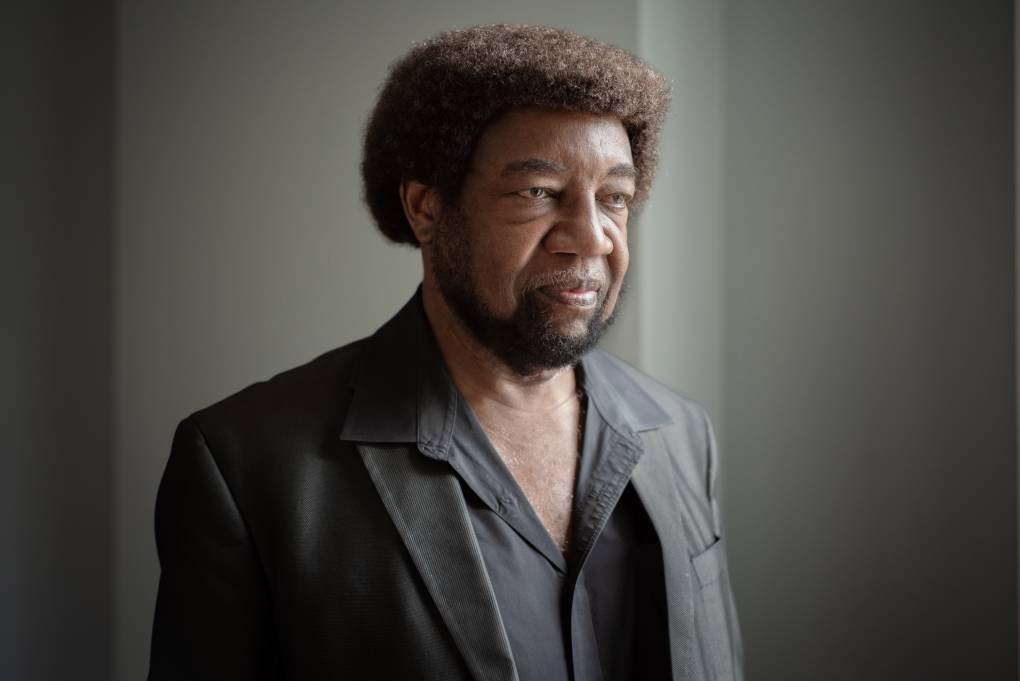Her classmate, Kenneth Mayfield says the message was clear that Black students were considered second-class citizens. He remembers they would be taunted when walking by the athletic dorm.
“You were going to get harassed, you know, with the N-word, stuff like that,” he says.
Mayfield’s best friend, Donald Cole, remembers sitting alone on his first day of chemistry class because white students refused to take the seats near him. He says he was regularly reminded of his place, for instance being forced off the sidewalk on a rainy day.
“There were some guys twice my size who blocked the sidewalk. I was supposed to walk around them in the mud,” Cole says.
A disheartening experience for students who thought they had a shot at an education here after James Meredith had broken the color barrier eight years before. Yet they encountered only token integration. So they formed a Black Student Union in protest.
Fighting for racial equity in the post-integration era
“We wanted our voices to be heard,” says Willis, secretary of the group. “We wanted to feel that we were a part of the mainstream, and that as Blacks or African-Americans, we would we would have a certain amount of power that we could leverage for whatever we wanted to in the future.”
Emboldened by protests on campuses across the country at the time, Cole says, the group came up with 27 demands for racial equity, and presented them to the chancellor on Feb. 24, 1970.
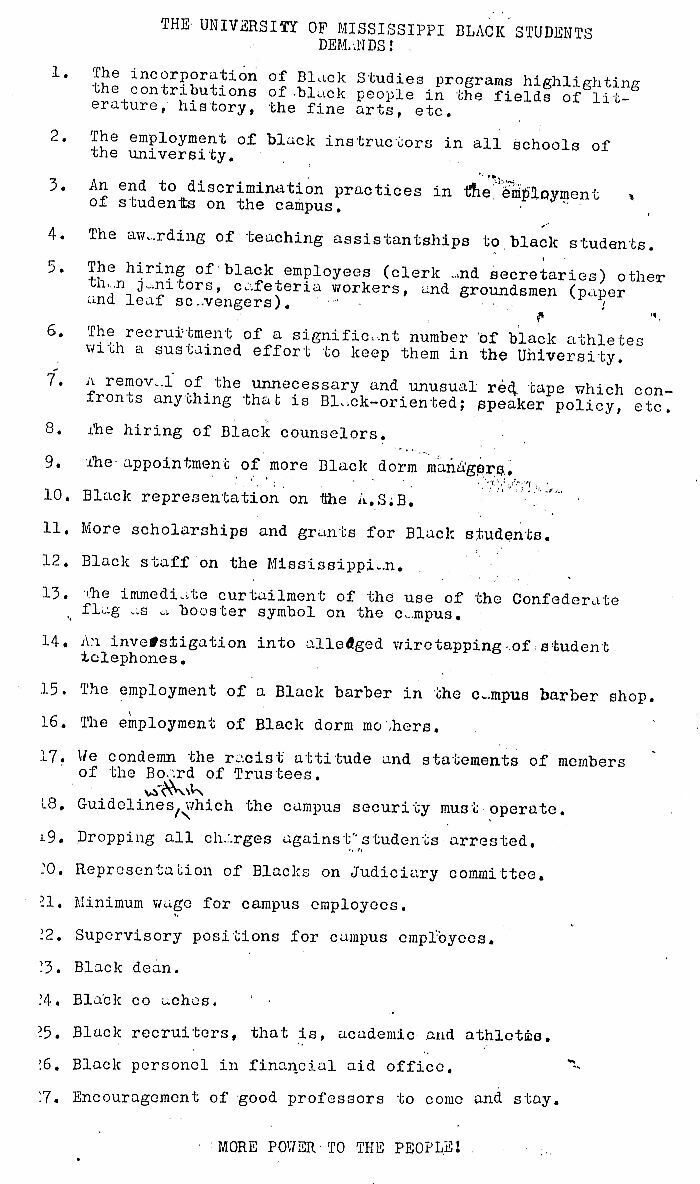
“We were just asking, very very simply, to be treated normally,” Cole says. “We were just trying to better the institution.”
They wanted the school to hire Black professors, recruit Black athletes, and do away with sanctioned racist imagery.
“Disassociation of the university with Confederate symbols — the flag at the time because that was that was just one way of individuals constantly telling me that they didn’t want me here,” says Cole.
“This was really about telling these Black students, ‘know your place; this is still a white man’s university,’” says Ralph Eubanks. He’s a writer-in-residence and Black Power faculty fellow at the Center for the Study of Southern Culture at the University of Mississippi.
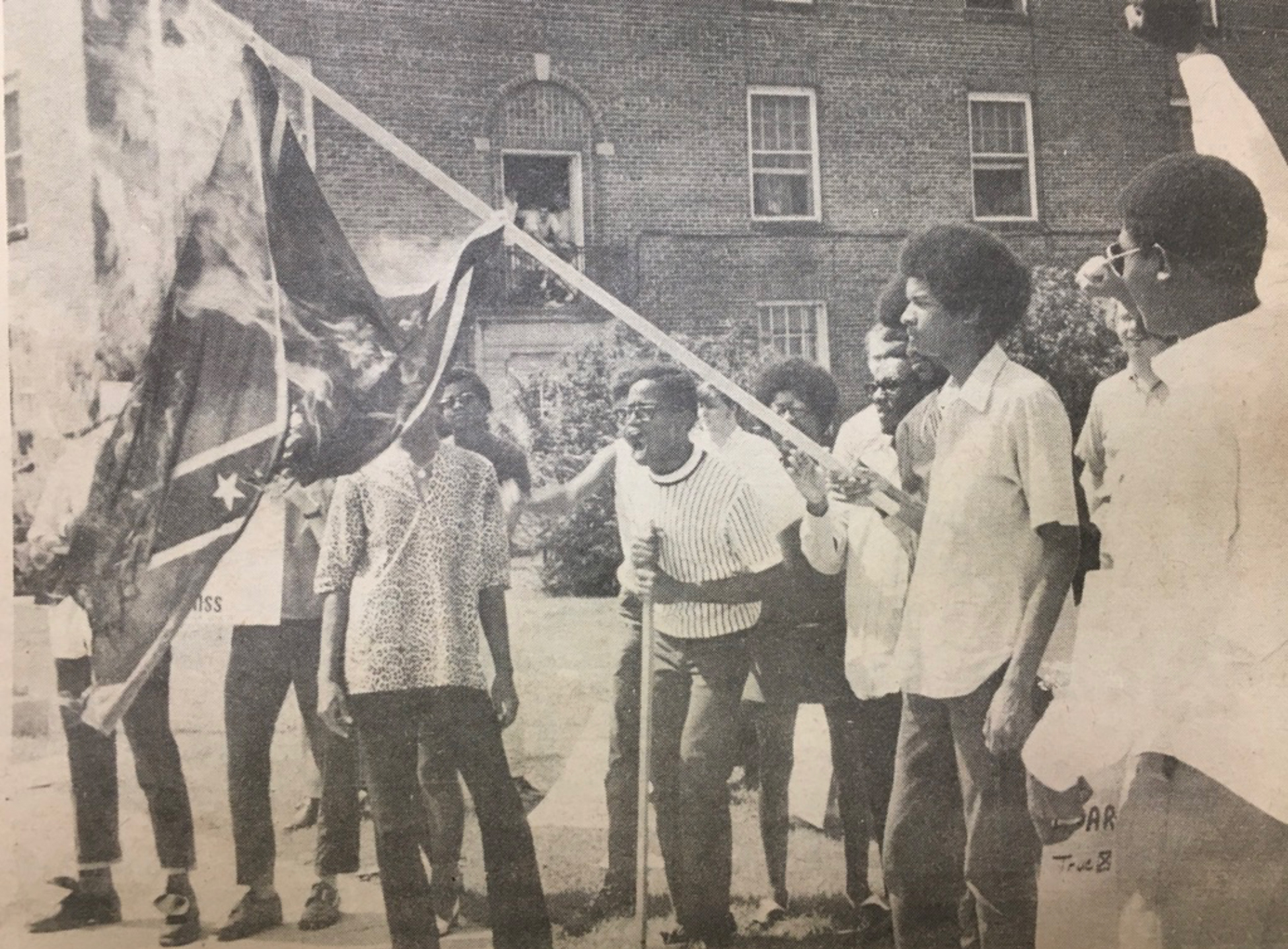
Eubanks is working to make sure the current generation of students at Ole Miss learns about the decades-long struggle to fully integrate the campus.
“I’m talking to you in a building right now that was built by slaves. And I can’t escape that,” Eubanks says. “I want everyone to see the connections, the historical connections between all of these events and not really forget them.”
He says they have lessons for today, and the future.
“That has been the missing piece of the civil rights movement,” he says. “We as a nation never learned to work together down the road. And this university, with its civil rights history, never had that form of reconciliation.”
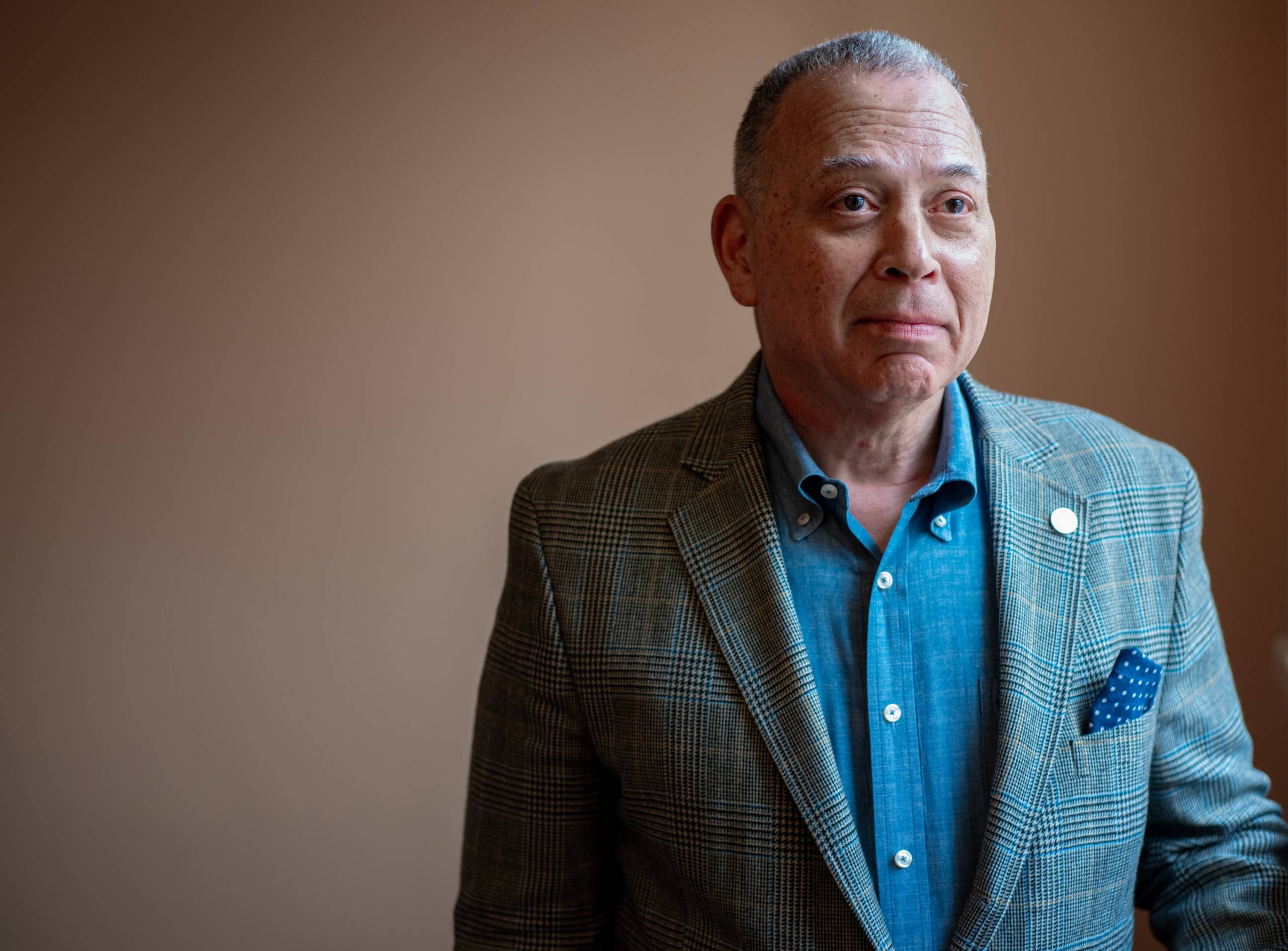
At a recent commemoration on campus, pre-law freshman Aminata Ba gave a dramatic recitation of the Black Student Union’s demands from 1970, telling the audience that the protest “was in resistance to the remnants of slavery in Mississippi and the consequential rampant racial abuse of Black students on campus.”
Ba considers herself a legacy of what those students demanded 54 years ago.
“You can’t help but just compare their experiences then to your experience now as a Black student at the University of Mississippi.” Ba says she wants to build on what they achieved.
“Addressing the difficult history and not whitewashing it, but instead saying, this is what we did and this is what we’re gonna do, and this is how we’re moving forward,” says Ba.
Arrested and expelled for asserting Black Power
A key event in the struggle of 1970 was when the Black Student Union disrupted a concert on campus. Linnie Willis says students were surprised the university was promoting the show by Up With People, a mixed-race international singing group.
“How hypocritical, that they are so willing to embrace this interracial group coming here, but yet they did not embrace us,” she says.
“We just walked right across in front of the performing group and stood there and, we raised our fists with the Black power symbol.”
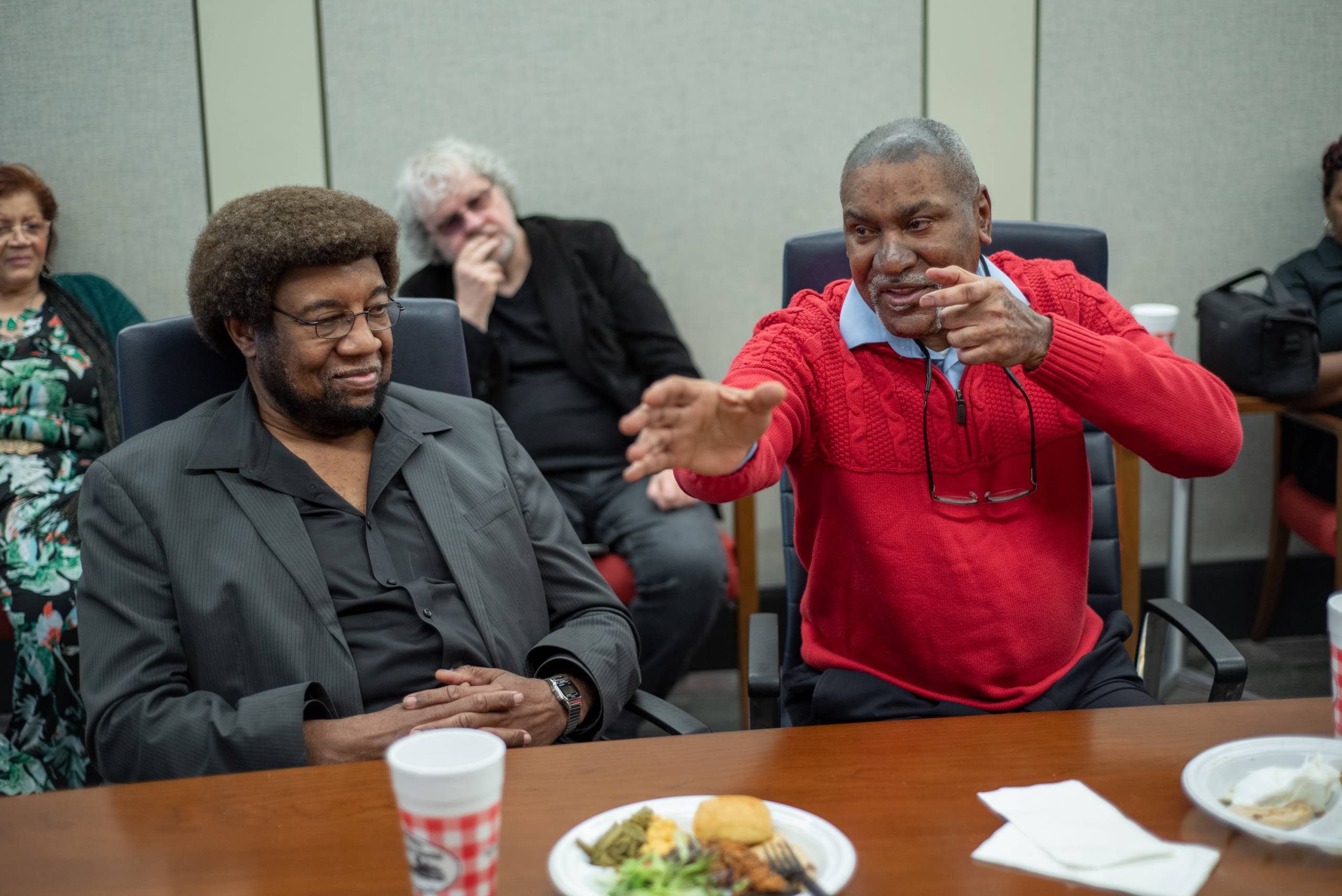
Kenneth Mayfield grabbed a microphone from one of the singers to spell out their demands. “A few minutes later, the word came up to those of us who were on the stage that the highway patrol had surrounded the building,” Mayfield remembers.
For the first time since that night 54 years ago, Mayfield and Cole are introduced to two members of Up With People who traveled to Oxford for the commemoration.
“I am just so glad that we are to be here tonight and laugh about it,” reflects Donald Cole, standing outside the venue where it all happened – Fulton Chapel. “It could have easily been a very violent night here.”
Bruce Parker and Ric Newman, both white men, were part of the cast. The protest made a lasting impression on them.
“We stopped the song we were singing, and we immediately went into [the song] What Color Is God’s Skin,” Parker recalls. “I think it really spoke to the protesters……I just felt like there was something going on here.”
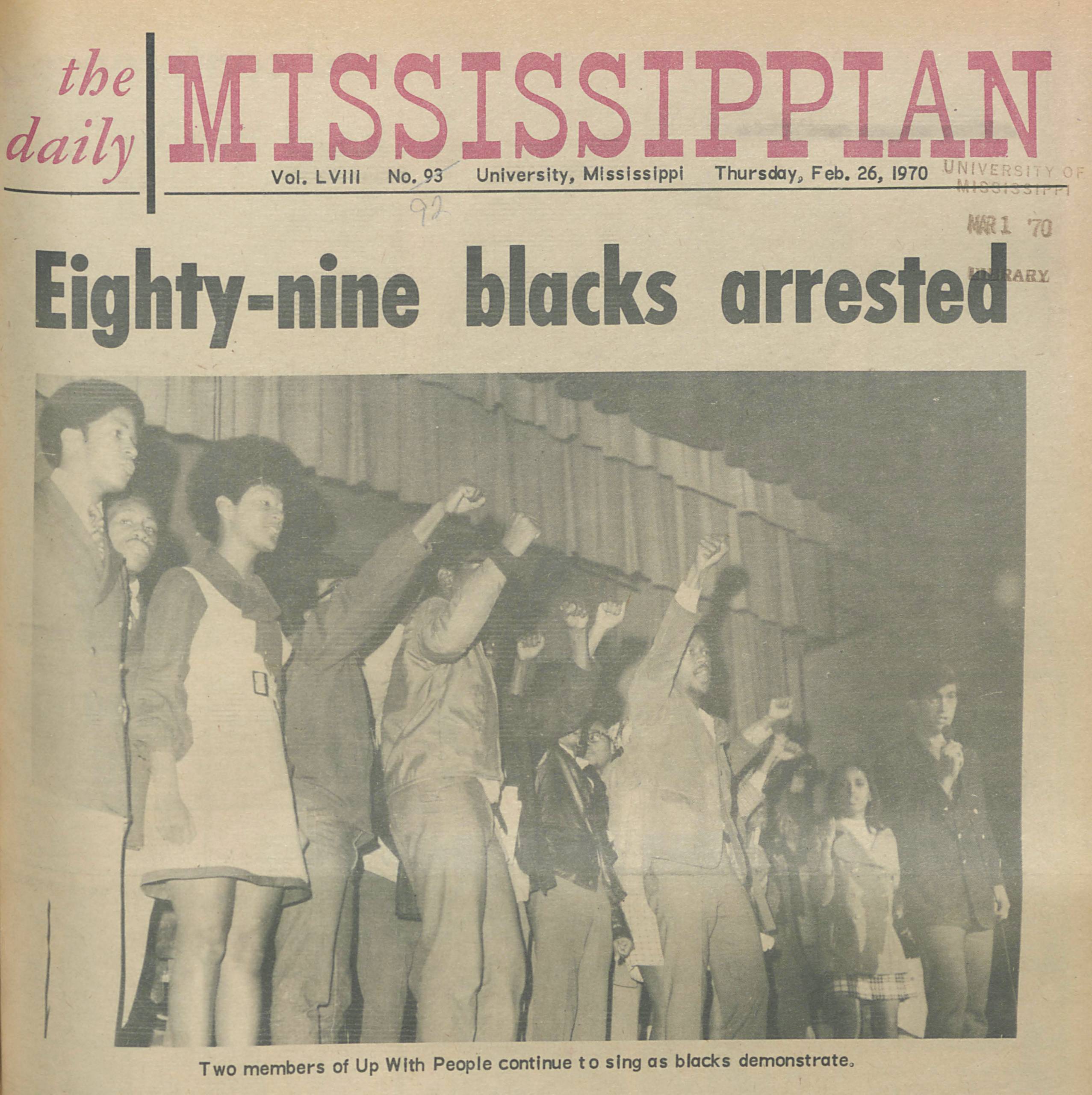
“We wanted them to know that we were standing with them, not against them,” says Newman, recounting the lyrics that said “every man’s the same in the good Lord’s sight.”
Eighty-nine protesters were arrested, along with other Black students who had earlier burned a Confederate flag. Eight of them, including Willis, Mayfield and Cole were expelled. Cole says they expected some form of punishment, but not to get kicked off campus.
“I mean we’ve seen frat boys do stuff much, much more,” he says.
“But those frat boys weren’t trying to change the whole culture of the South either,” Parker tells him.
50 years of silence about their struggle
The students sued to be reinstated, but lost their court battle. Cole says being expelled was a blow at first, but he and Mayfield went on to earn degrees from Tougaloo, a historically Black college in Jackson, Miss. Mayfield is a lawyer. And Cole is retired from the University of Mississippi. In a complicated relationship that spanned more than 50 years, he went back to earn his doctorate, became a math professor, and later, assistant provost for multi-cultural affairs.
Linnie Liggins Willis, who had completed all of her coursework, yet was still denied a degree, left the state of Mississippi for good. She’s retired from a career as executive director of a housing authority in Ohio.
Willis says she was bitter about the Ole Miss experience for a long time, and remained baffled about how quickly law enforcement showed up to arrest the protesters.
“For them to be there, poised and ready when we came out of that building? I always wondered about that.”
Years later, it was revealed that the Black Student Union had been under surveillance and infiltrated by the FBI, and the Mississippi Sovereignty Commission, the state spying agency created to maintain white supremacy. And their story was silenced.
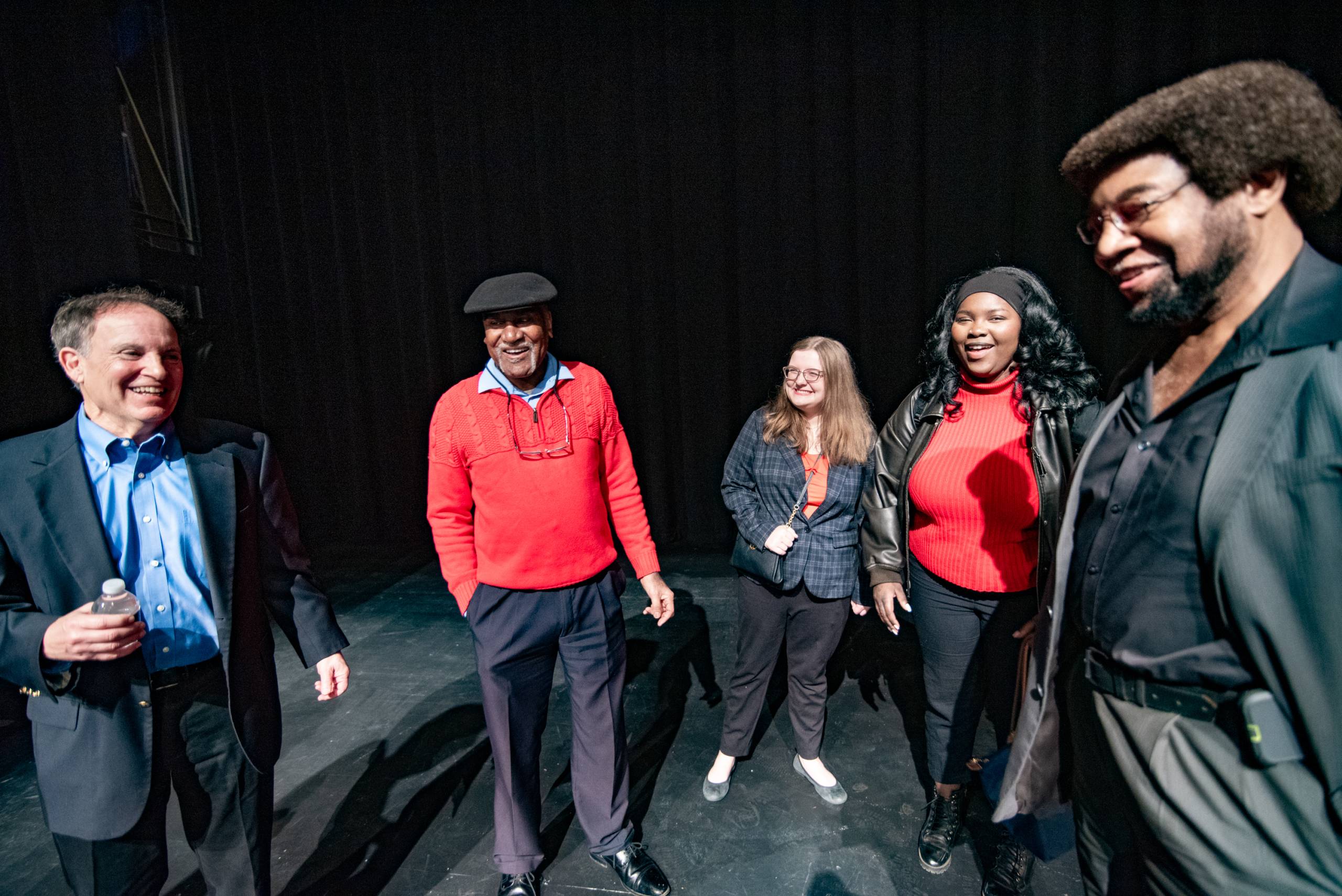
“Our history …. it’s almost like it was just wiped away, a clean slate. Nobody talked about us. Nobody heard about us and knew about us,” says Willis. “The university needs to reckon with the fact that we were there. We made a statement and because of that, there are many who are benefiting from that today.”
Fifty years later, Ole Miss did acknowledge their contributions. Willis got the degree that she’d earned but been denied. The university apologized to the expelled students and created scholarships in their honor, and now includes programs like the commemoration this year so that modern day students can learn from their experience.
“What we’re focused on now is making sure that we continue to reconcile and repair and build those relationships with those who were impacted and tell the story,” says Shawnboda Mead, Vice Chancellor for Diversity of Community Engagement at the University of Mississippi.
Modern day students embrace the difficult history
“The impact of the 1970 protest was not in vain,” says Robert Mister, a second-generation Black student at Ole Miss who says much has changed since then, and since his mother was a student here in the 1990s.
“I really don’t like how we hold Ole Miss to its old roots,” he says. “A lot of people in my community tend to say ‘oh, Ole Miss is that racist school. Ole Miss is that white man’s school.’ I’m here to tell you in 2024 that’s most definitely not the case.”
The institution has worked to distance itself from symbols of the Old South, banning the Confederate battle flag from sporting events, for instance. It’s installing historical markers that more fully reflect what happened, and there are even campus slavery tours now that delve deeply into the history here.
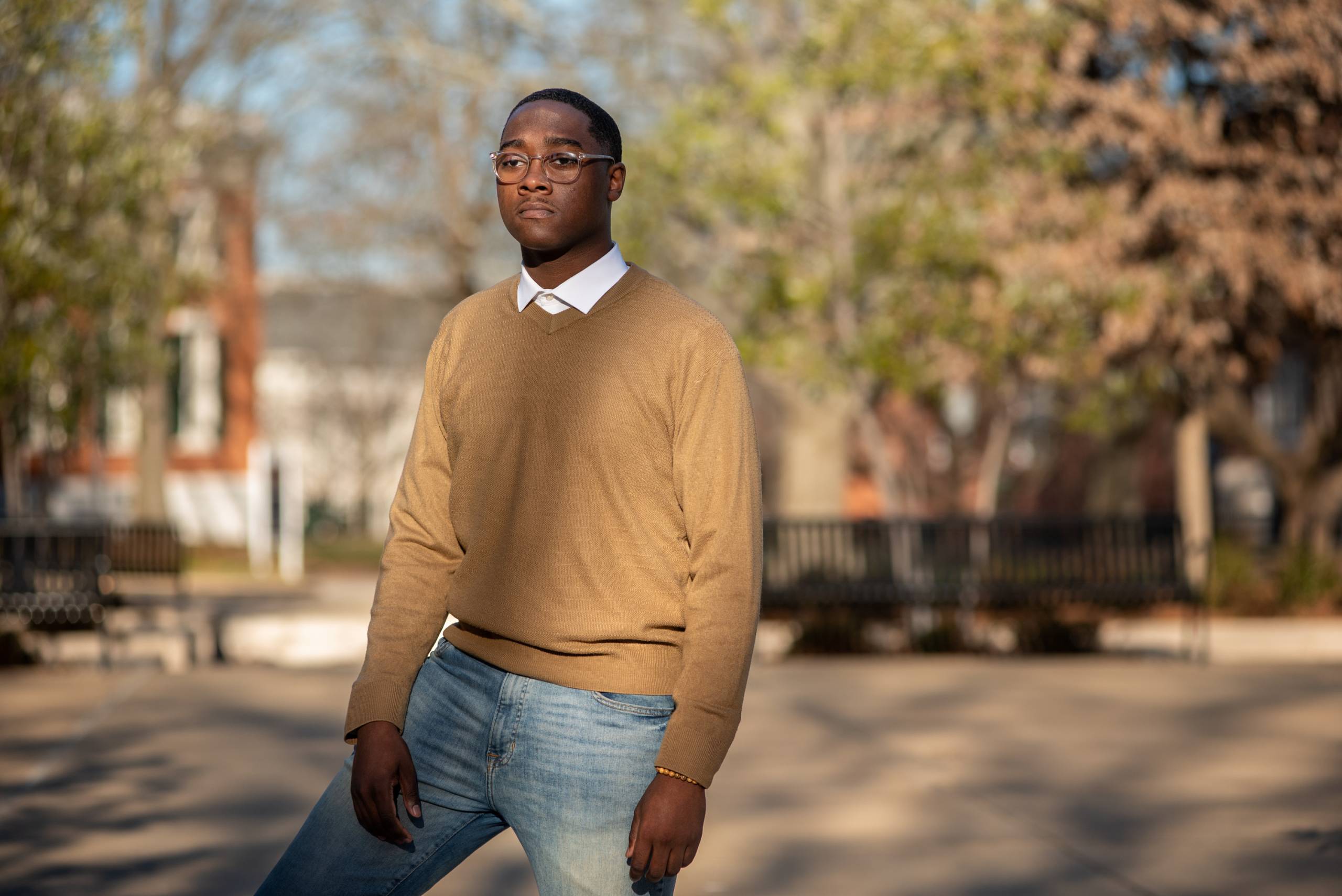
But Ole Miss still struggles to attract and retain Black professors and students in a way that reflects Mississippi. The state’s population is nearly 40% African-American, the highest percentage in the country.
Yet Black students make up only 11.4% of the University of Mississippi student body. And the percentage of Black faculty is even smaller — 6.5%.
Freshman Edward Wilson has noticed. “I’m like, where are they? You know, where is this representation and where are people who go here going to see any other representation besides the person who prepares my fries?”
Wilson says learning about what happened on campus in 1970 has him thinking about what protest means to people his age.
“You’re just trying to find a place in the world,” Wilson says. “It doesn’t have to be some big march for massive things like voting rights, but it can be small scale stuff. Just making your voice heard when you feel like you’ve been shut out of the conversation. That itself is protest to me.”
It’s not lost on Wilson that this program comes at a time when some conservative state leaders are seeking to curtail diversity, equity, and inclusion programs at publicly-funded universities, and to squelch frank conversations about difficult racial history.
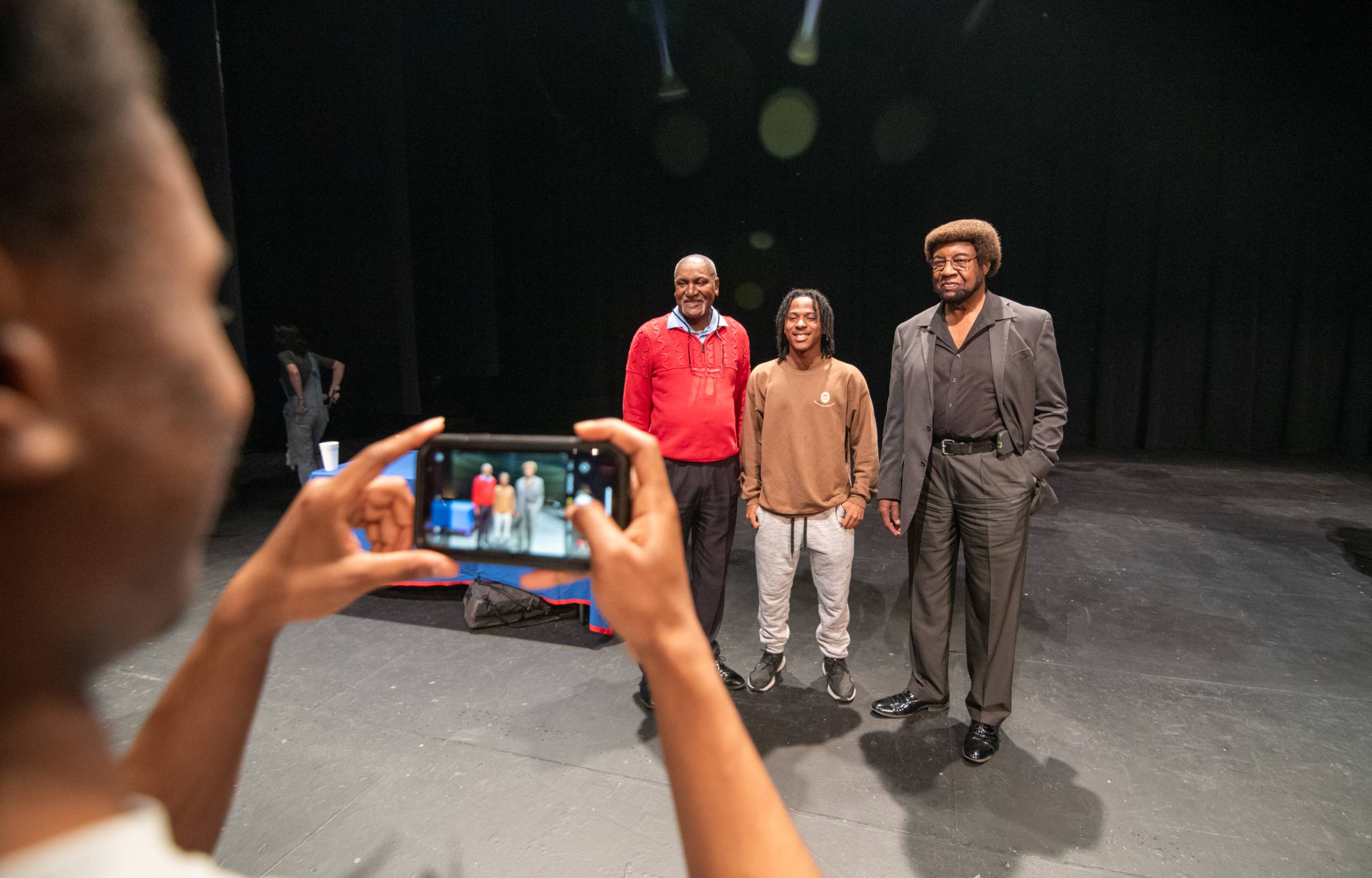
“I think that it’s blatantly saying ‘so yeah, it happened. But what about it?’” Wilson says. “If you only want the good parts and not understanding the bad parts, then it becomes willful ignorance at that point.”
His classmate, Emerson Morris, a white woman from Biloxi, Miss., notes that in the 60s, she would not have been able to participate in an event like this.
“These are my friends,” Morris says. “This is progress and we still have so much more to do in the future, but we cannot limit the voices of those around us. There’s a place for everybody here.”

